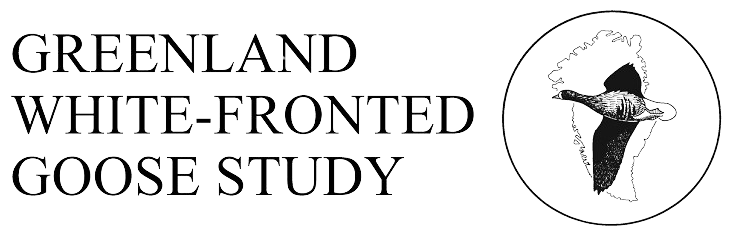History
There is little historical data to assist with our understanding of changes in the distribution and abundance of this flock. Most authors considered the Outer Hebrides as a unit, but since it would appear that North Uist held the greatest numbers in the past (a site presently abandoned by the population), it is difficult to make any comparisons over time. In the late 1800s, White-fronted Geese were considered rare in all the Outer Hebrides, but they increased extraordinarily between 1883 and 1887 on South Uist (Berry 1939). The fact that they arrived in mid October and left in April mark them out as coming from Greenland at that time. Much of these early accounts describe migration, frustratingly little detail is given to wintering birds. A-W (1963) reported up to 250 on the machair lands on the west coast and R&O (1979) implied that 300-400 were more regular numbers in the past. They suggested 100-200 birds at Loch Hallan were the main resort for these birds, but stressed the scarcity of data despite suggesting reductions in number in recent years.
Status
Regional importance. During the period for which there have been regular counts, the numbers have fluctuated dramatically between 7 and 67, the large differences between years may suggest undiscovered feeding areas and hence incomplete counts, so it is very difficult to know whether or not there has been a decline in numbers over the period or the magnitude of that decline. Certainly if there were regularly 100-200 birds at Loch Hallan in the mid to late 1970s, there was a drastic reduction to the present day.
Maximum winter counts:
Breeding success: There are no consistent production data from this site.
Feeding sites and habitat: Machair, low intensity farmland and bog, with freshwater areas.
Roosting sites: Not known, there are abundant lochs around in the immediate vicinity.
Habitat change: None known
Aircraft disturbance: None known
Hunting disturbance: Formerly a considerable problem with poachers in the 1980s and later, but less of a problem now.
Agricultural disturbance: Not known, there is much background agricultural disturbance, but it seems unlikely that this constitutes a problem at current levels.
Site safeguard: Loch Hallan is NCR SSSI and is part of the South Uist Machair and Lochs SPA and Ramsar site, which includes adjacent machair fringing the loch which is used by the geese.
SNH Natural Heritage Zones/Area: Coll, Tiree and the Western Isles.
Threats: The area is subject to shooting disturbance, although locals are careful to avoid shooting Whitefronts.
Linkages with other sites:
Four collared birds have been seen at this site, three were obvious migrants, two in spring, one in autumn. 1PT was ringed at Wexford in 1987/8, it was seen briefly on 6th November 1988 on South Uist before turning up at Wexford first seen 6th December 1988. 5CT was a spring migrant from Wexford where it was caught in 1991/2, wintered in 1992/3 but showed up on South Uist 13th April 1993. A7Y was a Greenland ringed bird marked in Isungua which wintered at Askernish in 1992/3, but moved to Caithness in the following year. Finally H8H was a Hvanneyri bird, ringed in west Iceland in spring 1999. It moved several times between years, being seen at Benderloch in 1999/2000, Wexford in 2000/1, 2001/2, Benderloch 2002/3, Wexford 2004/5 (last seen 8th February) but also stopped briefly at Kilpheder on 8th April 2005.
